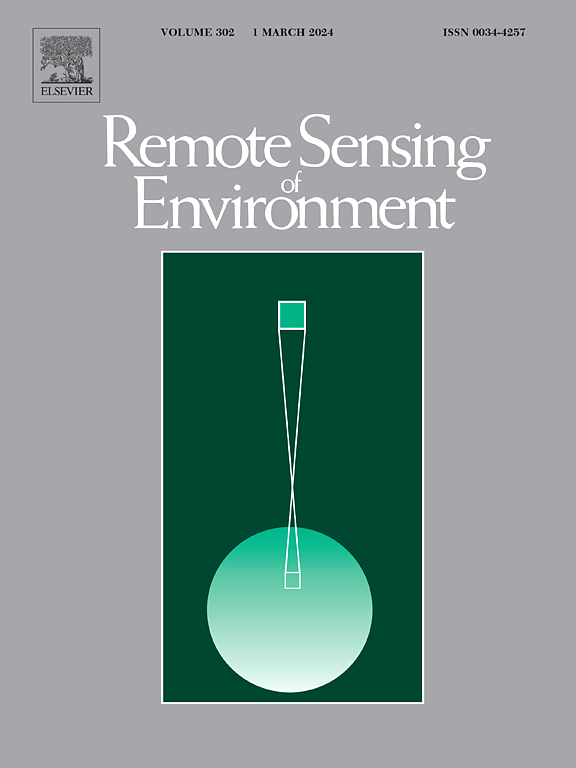Assessing on-orbit radiometric performance of SDGSAT-1 MII for turbid water remote sensing
IF 11.1
1区 地球科学
Q1 ENVIRONMENTAL SCIENCES
引用次数: 0
Abstract
The Sustainable Development Science Satellite 1 (SDGSAT-1) is the first satellite developed specifically for implementing the UN 2030 Agenda for Sustainable Development. The multispectral imager (MII) onboard SDGSAT-1 provides advanced capabilities for coastal and inland water environment analysis but requires comprehensive radiometric performance evaluation for effective water monitoring. In this study, the radiometric performance of SDGSAT-1 MII was evaluated for water quality monitoring by assessing its signal-to-noise ratio (SNR) and radiometric sensitivity to variations in suspended particulate matter (SPM). The SNR was statistically estimated from homogeneous waters over the South China Sea (SCS), and radiometric sensitivity was simulated using the Hydrolight software under varied SPM conditions. Results indicated that SDGSAT-1 MII exhibits significantly improved SNR and radiometric sensitivity compared to commonly used satellite sensors (Landsat-8 OLI and Sentinel-2B MSI), extensively applied in turbid water monitoring. Preliminary validation of SDGSAT-1 MII remote sensing reflectance () derived from Acolite DSF against Aeronet-OC measurements demonstrated strong agreement at 438 nm (=0.98 and NRMSE = 9.04 %), 495 nm (=0.94 and NRMSE = 16.39 %), 553 nm (=0.99 and NRMSE = 7.97 %) and 657 nm (=0.77 and NRMSE = 35.85 %). In addition, retrieved from SDGSAT-1 MII showed good consistency with Sentinel-3B OLCI at 438 nm (=0.7 and NRMSE = 23.32 %), 495 nm (=0.8 and NRMSE = 19.55 %), 553 nm (=0.96 and NRMSE = 11.07 %) and 657 nm (=0.93 and NRMSE = 31.30 %). However, the consistency of at the 401 nm and near-infrared bands (776 nm and 854 nm) was substantially lower relative to other bands. Regarding SPM mapping in the PRE, spatial consistency between the SDGSAT-1 MII and reference sensors remained high (Landsat-8 OLI: =0.78 and NRMSE = 19.96 %, Sentinel-3B OLCI: =0.78 and NRMSE = 19.96 %). Overall, these findings highlight the strong potential of SDGSAT-1 MII for monitoring coastal turbid waters, while also noting certain spectral limitations, especially for the shorter (401 nm) and near-infrared bands. This study thus offers valuable insights for future improvements in sensor design and operational applications of SDGSAT-1 MII in water quality remote sensing.
求助全文
约1分钟内获得全文
求助全文
来源期刊

Remote Sensing of Environment
环境科学-成像科学与照相技术
CiteScore
25.10
自引率
8.90%
发文量
455
审稿时长
53 days
期刊介绍:
Remote Sensing of Environment (RSE) serves the Earth observation community by disseminating results on the theory, science, applications, and technology that contribute to advancing the field of remote sensing. With a thoroughly interdisciplinary approach, RSE encompasses terrestrial, oceanic, and atmospheric sensing.
The journal emphasizes biophysical and quantitative approaches to remote sensing at local to global scales, covering a diverse range of applications and techniques.
RSE serves as a vital platform for the exchange of knowledge and advancements in the dynamic field of remote sensing.
 求助内容:
求助内容: 应助结果提醒方式:
应助结果提醒方式:


